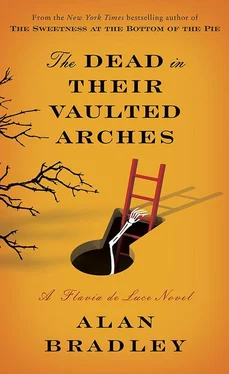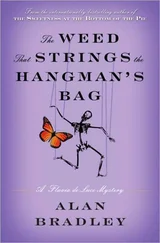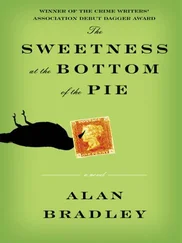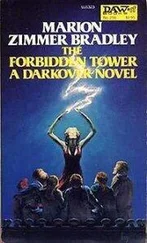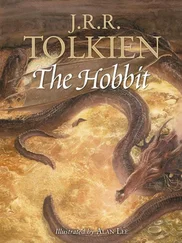To my mind, if Nature had wanted us to have bright red fingertips, She would have caused us to be born with our blood on the outside.
I painted the bulb with the varnish, blew wolfish huffs and puffs of air onto it until it was dry, then gave it a second coat, making sure that the surface of the glass was completely covered with the ruby lacquer.
With the critical job I was about to undertake, I couldn’t afford the slightest leakage of white light.
Again I latched myself into the darkroom. I clicked on the switch and was rewarded with a dim red glow.
Perfect!
I gave the crank on the side of the camera a bit of a windup and pushed the button. There was a clattering whir as the film inside jerked into motion. After no more than about ten seconds, the end of the ribbon went through and flapped lazily on the spool.
I undid the snap, opened the side of the camera, and removed the full reel.
Now came the tricky part.
I wound the film, one slow turn at a time, off the reel and onto the wire whisk, securing it at each end with a paper clip.
I had already half filled the bedpan with my coffee “developer,” and into this I dipped the whisk, turning it ever so slowly … slowly … like a chicken on a spit.
The thermometer in the coffee bath was spot on at 68 degrees Fahrenheit.
The twelve minutes recommended by the photo manual went by like flowing sludge. As I waited with one eye on the clock, I remembered that in the early days of photography, film had been developed with gallic acid, C 7H 6O 5, which was obtained in small percentage from oak apples, those tumors that grew on the twigs and branches of the gall, or dyer’s oak, wherever they had been punctured by the gallfly in laying its eggs.
Oddly enough, those same galls, dissolved in water, had also once been used as an antidote to strychnine poisoning.
How pleasant it was to reflect that without the female gallfly, we might never have had either photography or a convenient means of saving one’s rich uncle Neddy from the hands of a would-be killer.
But would this film I had found in the camera have retained its latent images? Interesting, wasn’t it, that one word—“latent”—was used to describe the invisible, undeveloped forms and shapes on photographic film as well as yet-invisible fingerprints?
Would the film show anything at all? Or rather just the wet, gray, disappointing fog that might well have resulted from too many baking summers and freezing winters in the attic?
I watched fascinated as, at my very fingertips, hundreds of tiny negative images began to form, fading into existence as if from nowhere—as if by magic.
Each frame of the film was too small to guess at its content. Only when the film was fully processed would its secrets—if any—be revealed.
Twelve minutes had now passed, and still the images did not yet seem to be fully developed. The coffee developer was obviously slower-acting than metol. I would keep up my twirling of the whisk until the images seemed as dark as a normal negative.
Another twelve minutes went by and I was beginning to flag.
When it comes to chemistry, impatience is not a virtue. Half an hour is far too long to engage in any activity, even one that’s enjoyable.
By the time the images seemed satisfactory, I was ready to scream.
But I wasn’t finished yet. Far from it. This was merely the first step.
Now came the first wash: five minutes under running water.
Waiting was agony. I could hardly resist the urge to load the partly processed film into the projector and hang the consequences.
And then the bleach: I had already mixed a quarter teaspoon of potassium permanganate into a quart of water and added to it a second solution of sulfuric acid in a little less water.
Another five minutes to wait as I slowly rotated the ribbon of film in the liquid.
Another wash as I counted slowly to sixty to make a minute.
Now the clearing solution: five teaspoons of potassium metabisulfite dissolved in a quart of water.
It was now safe to switch on the room lights.
The opaque silver halide—the part of the film that would eventually become black—was now a creamy yellow in color, like images daubed onto a ribbon of transparent glass with Mrs. Mullet’s abominable custard.
By reflected light these images appeared to be negative, but when I held them up in front of the white light, they looked suddenly positive.
I could already make out what seemed to be a distant view of Buckshaw: a yellow, aged Buckshaw like a dwelling from a dream.
Now for the reversal.
I held the whisk up at arm’s length until it was about eighteen inches from the white room light, then rotated it slowly as I counted to sixty, this time using a variation on a method I had learned while studying artificial respiration in Girl Guides before being sacked (unjustly) by that organization.
“One cy-an-ide, two cy-an-ide, three cy-an-ide,” and so on.
The minute flew by with surprising speed.
At the end of that time, I removed the film from the whisk, turned it over, and similarly exposed the other side.
Time for the coffee again: what the manual referred to as the second developer. The yellow objects in each frame would now become black.
Six more minutes of dunking and dipping, turning the whisk to be certain that all parts of the film were equally immersed in the reeking liquid.
The fourth wash—even though it took only sixty seconds—seemed an eternity. My hands and arms were becoming stiff from the constant rotation, and my hands smelled as if they had been—well, never mind.
No need for a fixer: The bleach and clearing solutions would have already removed the reduced silver from the first developer, and whatever silver halide remained had been reduced to elemental silver by the second developer and was now forming the black parts of the image.
Easy as Cottleston pie.
I let the film rest for a few minutes in a tray of water to which I had added alum for hardening purposes, in order to make it scratch-resistant.
After a time, I pulled up a length of the film and peered at it through a magnifying glass.
My heart skipped a beat.
The images were heartbreakingly plain: In frame after frame, Harriet and Father were seated on a picnic blanket in front of the Folly on the island in Buckshaw’s ornamental lake.
I turned off the room light and let the film sink into the water, leaving the dim red safelight as the only illumination, not because it was necessary, but because it seemed somehow more respectful.
As I have said, I traced their initials in the water:
Harriet and Haviland de Luce. I was not able, at least for now, to look at their faces in anything other than light the color of blood.
It was too much like spying on them.
Finally, reverently, almost reluctantly, I removed the film from the water and wiped it clean with a bath sponge. I carried it out into the laboratory and hung it up to dry, draping it in great drooping festoons from the framed table of the elements on the west wall to the signed photograph of Winston Churchill on the east.
In my bedroom, waiting for the film to dry, I dug out from the pile under my bed the disc I wanted: Rachmaninoff’s Eighteenth Variation on a Theme by Paganini , the best piece of music I could think of to accompany the recalling of a great love story.
I wound up my gramophone and dropped the needle into the spinning shellac groove. As the melody began, I seated myself, knees drawn up under my chin, in one of the window seats overlooking the Visto, the long-overgrown lawn upon which Harriet had once tied down her de Havilland Gipsy Moth, Blithe Spirit .
I fancied I could hear the clatter of her engine as Harriet lifted off among the swirling morning mists, rising up above the chimney pots of Buckshaw, up above the ornamental lake with its Georgian Folly, and vanishing into a future from which she would not return.
Читать дальше
